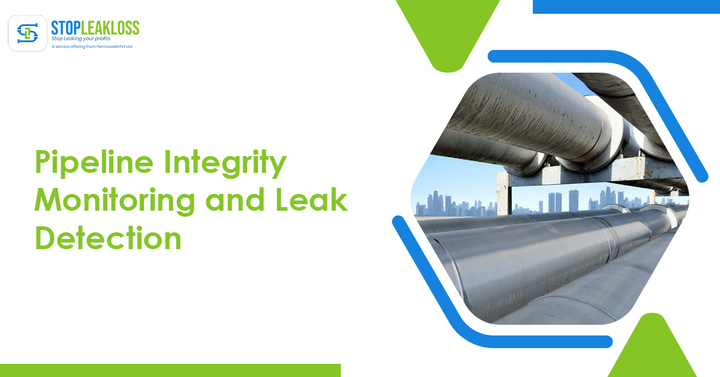
Pipeline Integrity Monitoring and Leak Detection
Some of these pipelines are reaching capacity limitations due to significant technological developments in oil and gas exploration and production, and additional pipelines are being planned and built.
The safety and environmental impact of maintaining the integrity of these pipelines is critical.
A slew of types of pipeline leak detection for monitoring pipe leaks. The following are a few of the most notable:
Detection of pipe leaks
A pipeline leak or rupture can have catastrophic consequences for the environment. We assist you in immediately determining the location of the leak using remote fiber-optic sensor technology so you can take data-driven action to reduce its severity. By defining abnormal events with higher accuracy than traditional approaches, these technologies also help you eliminate false positive events that disturb your pipeline’s performance and throughput. Every second missed following a spill impacts your environmental restoration expenses, ongoing license to operate, regulatory fines, and public faith in our industry’s efforts to transport energy more safely and efficiently across long distances. (pipeline leak detection)
STOPLEAKLOSS has created a sophisticated, efficient pipeline leak detection system based on fiber optics that can correctly spot and reduce leak incidents in real-time. In addition, the system can be scaled to encompass all pipeline assets, from above-ground collection networks to underground transcontinental oil and gas transmission pipes, and it can handle all fluid kinds.
Pipeline leak detection software has a simple operator interface that allows pipeline operations employees to receive remote and control room alarms through, text messages, or e-mail, acting with the appropriate amount of urgency while minimizing false positives. (pipeline leak detection)
Detection Of Corrosive Environment | pipeline leak detection
While there are numerous dangers to a pipeline’s integrity, undetected corrosion or erosion can lead to catastrophic occurrences such as unplanned shutdowns, lost output, and perhaps property and liver damage. STOPLEAKLOSS pipeline management systems allow for real-time monitoring of corrosion and erosion from any location, giving you more time to prevent rather than respond to a problem.
Control and surveillance
The pipeline control room is the crucial operations center for safe, dependable operation. Still, a lack of sight to the field can limit rapid response to demand circumstances and urgent incidents, which can negatively impact contractual obligations and deliveries. Therefore, your pipeline is continually monitored using STOPLEAKLOSS solutions to avoid possible integrity concerns and minimize false alarms, allowing operators to focus on the job and keep your operation operating smoothly. (pipeline leak detection)
Controlling Spikes
Uncontrolled liquid pipeline operational pressure spikes can result in the loss of assets, property, lives, and substantial environmental harm, particularly if the pipeline ruptures. Surge liquids may be gathered and held for reintroduction into pipelines using Emerson’s automated control systems, reducing surge impacts, reducing risks, and avoiding shutdowns or other difficulties that could harm your business.
Tracking of pipeline pigs
Pipeline operators use mechanical pigging to keep pipelines clean, batch pigging to deploy various goods, and inspection pigging to identify pipeline abnormalities, including dents, corrosion, and fractures. When pigs become lodged within a pipeline, operations can be severely disrupted, and the pipeline system may be completely shut down. (pipeline leak detection)
Pipeline operators can use fiber-optic pipeline monitoring to measure pig velocity, compute pig arrival timings, and alert repair workers. Fiber-optic detecting capabilities can more accurately find a trapped pig than traditional techniques, allowing you to make more informed judgments about pigging incidents thanks to remote pig monitoring. Pig monitoring may be utilized for everyday events like pig arrival planning and more actual events like deploying the required staff to cut into the pipeline and extract a trapped pig.
Continuous pipeline monitoring enables batch pigging to be automated, with pig launcher and pig receiver systems able to detect pigs at any moment and adjust pressure and flow to optimize the pigging schedule.
Monitoring sensitivity, dependability, robustness, accuracy, reaction time, and system cost should be considered when selecting pipeline monitoring systems.STOPLEAKLOSS leak detection systems have various systems with separate alerting or integrated systems with shared alarming to meet the sensitivity, reliability, accuracy, and robustness criteria.
- Pressure and flow variations are analyzed using a statistical leak detection approach. This method is simple to set up, but it is difficult and expensive to calibrate, and it lacks sensitivity, consistency, and precision.
- A wave in the fluid created by a leak is measured using the pressure wave leak detection method. This approach is appropriate for bigger breaches since it has a high accuracy and detection time. However, small leaks and theft require more precision, and this system is less sturdy and trustworthy.
- The input and outflow, less the volume packing rate, is used in the real-time transient model (RTTM) leak detection approach to calculate a volume balance. Although this approach has high sensitivity, accuracy, durability, and dependability, it is more difficult to set up than other methods.
Mass balance, model-compensated mass balance, and rarefaction wave are some of the other techniques.
Internal natural gas leak detection is best accomplished with RTTM. It’s the only key that meets all of the requirements. It detects various sizes of leaks by using time averaging intervals—short periods for major leaks and lengthy periods for minor leaks. To reduce the possibility of false alerts, dynamic alarm levels are defined. Finally, the upstream and downstream imbalance fraction is used to compute the leak location.
Real-time and historical databases from the SCADA or DCS system controlling the pipeline, operator, and engineering stations, LEAK DETECTION software performing real-time leak detection with a primary and secondary real-time model server, operator stations, and backup and printing accessories are all part of typical architecture.
For more information on maintaining pipeline integrity, see https://stopleakloss.com.




[…] Easy to Use: With older gas detectors, it’s difficult to tell if you’re obtaining an accurate reading due to regular calibration requirements and their restrictions. Gas detectors equipped with the MPS sensor are simple to operate. They also offer an easy-to-use interface that gives workers the information they need when gas is present in unsafe proportions. (pipeline leak detection) […]